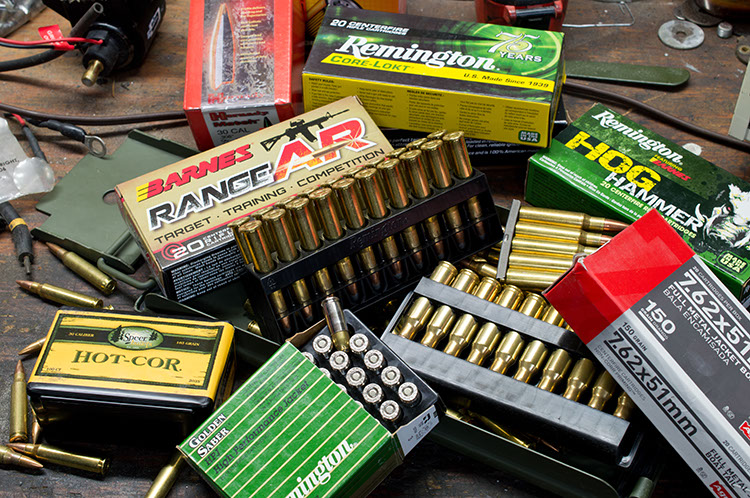
Gun people love to talk about, read about, and generally think about guns. We here at Calibre know this because we’re guilty of it too. We look at them, play with them, take them apart, and dissect their quality, use, and performance ad nauseum. And we do this because they’re fun. They’re interesting. They’re complicated. But they’re also only half of the equation. Because as much as we’re fascinated by guns, at the end of the day they are little more than a metal tube that allows regular people to throw a pointy piece of metal at supersonic speeds. And what the pointy piece of metal does is entirely dependent on how it was made.
And how bullets have been made throughout time has changed immensely as we come to understand both exterior and terminal ballistics. The former term refers to the performance of a projectile as it travels through the air while the latter deals with how the projectile behaves once it has arrived at its target. For hunting purposes, both exterior and terminal ballistics play an important role in projectile selection, while most target shooters will primarily concern themselves with exterior ballistics. And of course, for both parties, cost is always a factor. Here are some of the most popular projectile formats, explained. We’ll begin at the beginning, with an explanation of bullet types.
The classic “bullet” as most laymen would envision it, the full metal jacket (or FMJ round as it has come to be known) is one of the most common forms of projectiles in existence. This is largely as a result of its wholesale selection by the world’s armies after the Hague Convention of 1899 banned all projectiles that could easily expand or fragment in the body for use in international warfare.
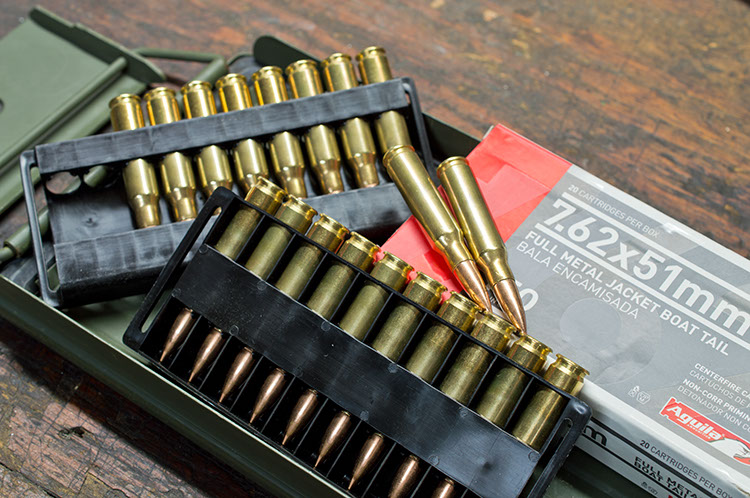
However, while their terminal ballistics may preclude their use in most practical situations, their exterior ballistics are typically excellent. In the case of most modern full metal jacketed rifle projectiles, the bullet is sharply conical in shape and thus referred to as a “spitzer” bullet. Initially developed by the Germans (spitzer being the German word for “pointed”) this shape greatly increases the ballistic coefficient of the projectile, which is nothing more than a fancy way of saying the bullet experiences less drag as it passes through the air. As a result, these rounds are typically capable of travelling faster and farther than many others, especially when paired with a boat-tailed bullet base, a combination usually identified as FMJBT.
Thanks to their widespread military use, FMJ and FMJBT bullets are readily available and typically can be some of the cheapest projectiles to purchase. Although completely unacceptable and, in fact, illegal for hunting use, their combination of high accuracy and low cost make them the target shooter’s choice.
One of the oldest rounds in existence, the soft-point bullet was developed shortly after the creation of cordite, when it was discovered that the increased velocities allowed by this new propellant would strip lead from a bare lead bullet as it travelled down the barrel. By jacketing the lead bullet in copper, the bullet better retained its mass through the firing process, but still flattened out or mushroomed upon impact.
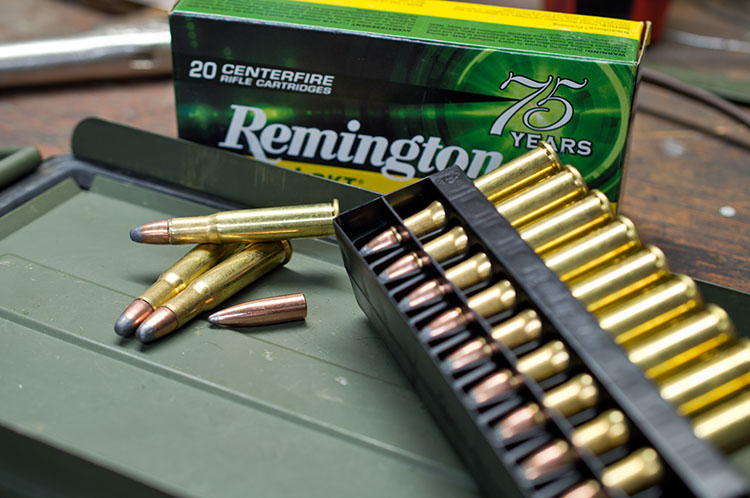
The external ballistics of soft point bullets vary somewhat. That is mostly because there are two relatively distinct versions of the soft-pointed bullet. One, now common on the commercial rifle ammunition market, draws the lead tip to a point, while the other simply flattens off at the end of the jacket. Obviously pointier bullets move through the air more easily, but the small lead tip is easily deformed and can induce inconsistent accuracy at long range, while the flattened tip bullets create more drag in the air but expand slightly faster.
As a relatively old technology that’s been around forever, soft-pointed bullets are some of the cheapest ammunition variants found. However, their age and generally compromised performance at both ends also means they are not commonly found as bare bullets for reloading, as hunters are far more likely to opt for a more modern bullet design while target shooters still prefer FMJ projectiles.
One of the most discussed and controversial bullet designs in existence, the hollow point, or HP bullet is designed to impart maximum energy to the target as rapidly as possible. A term bandied about in movies, video games, and TV shows alike, there’s plenty of rumours surrounding restrictions on the purchase and use of hollow point ammunition in Canada, but suffice to say they remain nothing more than that: rumours. To put it bluntly, hollow point ammunition is entirely legal.
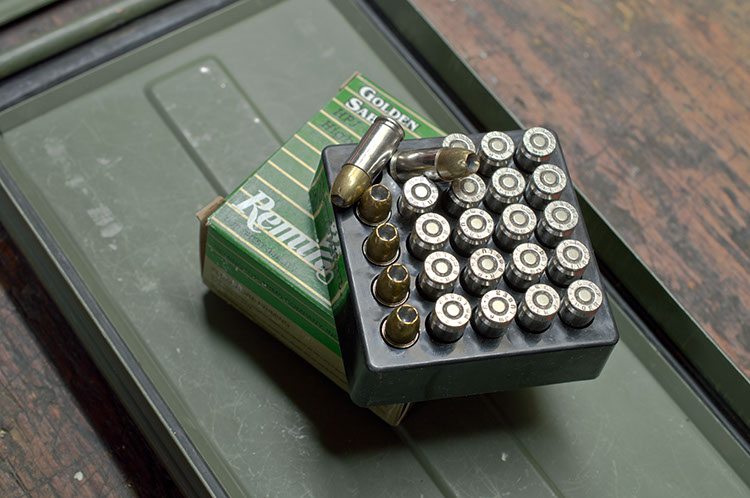
However, while their terminal performance is very good, their external ballistics leave a lot to be desired. With a hollowed out area flying through the air, they not only have expectedly poor ballistic coefficient figures, they’re also frequently poorly balanced and susceptible to straying off course. Also, depending on the round and the firearm, there can be feeding issues with some hollow pointed ammunition varieties, as bullet manufacturers try to maintain the same bullet weight while creating a void in the bullet’s nose. This usually means the bullet’s nose is flared out excessively, and is less rounded near the case mouth, right where it may meet the feed ramp.
Popular, well-tested, and relatively easy to make, hollow point bullets vary in price dramatically due to their wide range of use. Some handgun-calibre hollow point ammunition varieties intended for potential self-defence work can be quite expensive, as manufacturers strive to enforce the most stringent quality controls on those rounds. For other rounds, such as popular lever gun calibres, hollow point ammunition can be quite affordable... and a very sensible choice given the restrictions enforced on bullet types by a tube magazine.
A relatively new invention, plastic or “ballistic” tipped bullets don’t yet have the ubiquitous category name that the preceding bullet styles did, but are instead sold under a myriad of trademarked brands, such as Nosler’s Ballistic Tip, Hornady’s SST and Barnes’ TSX. These bullets have been designed to combine the terminal performance of a hollow point with the external ballistics of a traditional spitzer-style full metal jacketed projectile.
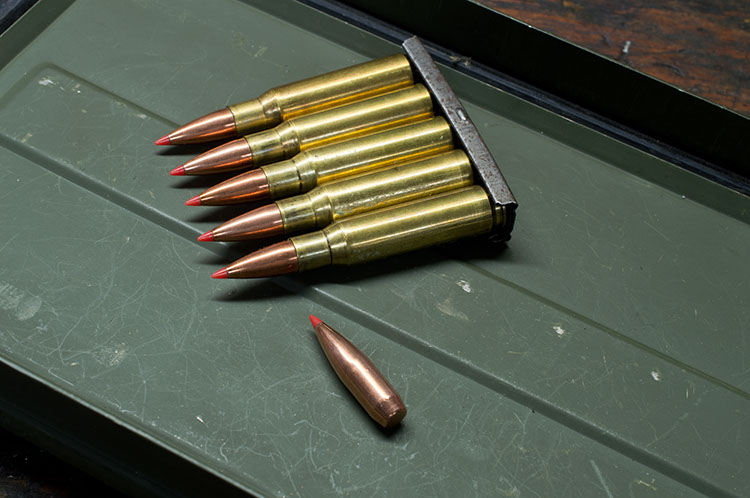
Externally, being very well shaped and usually well balanced, these bullets are typically the most accurate projectiles suitable for hunting.
Having become wildly popular among manufacturers, the plastic tipped bullet has become a staple in the hunting community, but doesn’t necessarily come cheap. Having assumed it’s place atop most manufacturer’s product lines, most plastic tipped variants carry similarly premium price tags, making it some of the more expensive ammunition available.
One small and obscure category of bullet is the open tip match round. Championed by the famous and highly sought after Sierra MatchKing bullet, this particular style of bullet was created specifically to be fired from the 7.62 NATO marksman’s rifles used in service rifle competitions, and as such was available in 168 grain, .30-calibre only. It’s design has since been adapted to other calibres as well.
Although it may look like a strangely proportioned take on the hollow point’s design, with a smooth jacket terminating near the nose and leaving what appears to be a cavity in the internal material, the open tipped match bullet is anything but. That small hole at the bullet’s tip doesn’t give way to a cavity within the lead core but actually opens into a far larger cavity within the jacket itself. Having not been designed for use against anything other than paper targets at Camp Perry and other competitive settings, it is not intended for any other uses.
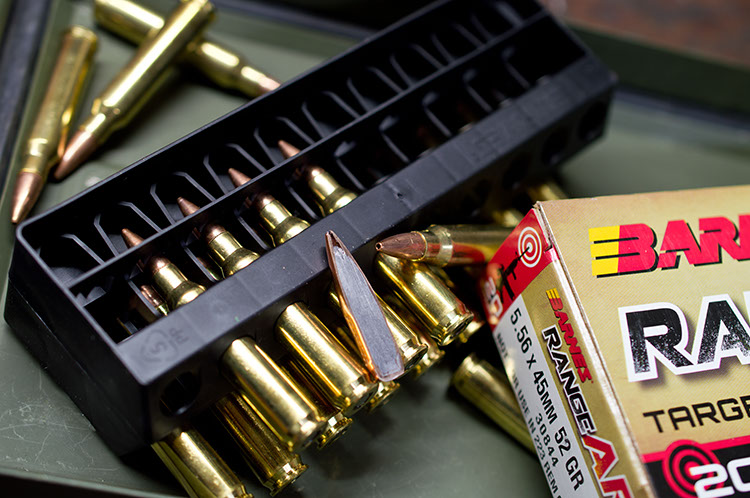
Being a product with a very specific market that also sees quite a lot of demand, match-grade open tipped bullets are considerably more expensive than many other formats of projectile. Also, they are far more commonly available in NATO standardized calibres such as .30 and .224, and although they are certainly manufactured for numerous other calibres, those other calibres can be substantially harder to find.
The tip of the bullet plays an obvious role in the round’s effectiveness and accuracy. But of particular importance to hunters, how a rifle bullet’s copper jacket and lead core are constructed and joined will play a tremendous role in how the bullet performs once it has arrived at its target. And to this end there are a few different mechanisms used by most commercial manufacturers to promote better terminal ballistic performance.
As propellant became more and more efficient at pushing bullets ever faster, it became obvious that ensuring that a bullet’s lead core and copper jacket did not separate upon impact would become a priority, as doing so meant a significant reduction in bullet mass and energy. Obviously the easiest way to accomplish this is to use mechanisms that mechanically and or chemically adhere the copper jacket to the lead core. The result is what’s known as a bonded bullet.
One method of retaining the lead core within the copper jacket is to simply glue them together. Of course, that is a gross oversimplification of the process and chemicals involves, as most actually use some form of electro-chemical reaction between a specifically selected copper alloy used for the jacket and a specific lead alloy for the core. Others use the application of electricity to essentially solder, or as some manufacturers refer to it, weld the core and jacket together.
In some cases, manufacturers use a mechanical system to bond the bullet core and jacket together. In many cases this may be as simple a device as a crimped cannelure around the bullet. This is a pressed-in serration that’s applied to the assembled bullet that serves two purposes. First, and perhaps foremost, it reduces the diameter of the bullet and allows the case to be crimped around it. This significantly increases the durability of ammunition. Secondly, it embeds the copper jacket into the lead core and provides a degree of mechanical grip between the two components. In many hollow pointed projectiles, the cannelure serves as a sort of limiting factor for the bullet’s expansion; a belt of sorts to keep the round from expanding too much.
But in many cases, manufacturers have used other methods of mechanically ensuring the core remains encased by the jacket, such as using varied thicknesses of jacket. Remington’s Core-Lokt ammunition, for example, uses a jacket that has a cavity that gets noticeably wider at the bullet’s base. As a result, the lead core is kept from ejecting forward out of the jacket by the jacket’s narrowing cavity. Hornady’s Interlock system uses an additional ring formed into the lower portion of the jacket halfway between the base of the bullet and the cannelure. This ring protrudes into the lead core and again, keeps it from ejecting forward and coming free of the jacket.
Another method of ensuring the bullet’s expansion and weight retention is strictly controlled is to divide the load core into sections. This is accomplished by dividing the front and rear half of the bullet’s lead core with a dam that is integral to the jacket. In other words, instead of a single cavity within the jacket, these bullets have two; a front and a rear cavity. The idea behind this is that the nose cavity, usually capped off with a soft point, expands like a conventional bullet while the capped rear cavity ensures solid penetration. Even if the entire lead core is lost from the nose cavity, the rear component will continue forward as an FMJ round.
Of course, these are complex bullets compared to most, they are harder to manufacture and thus amongst the most expensive rounds available. Furthermore, although their combination of expansion and penetration is very effective on both large and small game, they are considered by many to be superfluous when used on most small to mid-size game when conventional bonded or even unbonded soft points perform adequately.
The downside to bullets designed in this man ner is both their prohibitive cost and their relative inconsistency. By virtue of essentially making two bullets in one, it’s not uncommon for the lead cavities within to be slightly different, which throws off accuracy. Instead of having a single mass of lead that’s consistent from one round to the next, there are two lead masses within each bullet that must be consistent with both one another, and consistent with each additional round. Also, since the front cavity on most is quite small but expands very quickly, a hunter is far more likely to find the front lead core has separated from the jacket in one of these divided bullets than a traditional or bonded soft point.
Lead has been the go-to material for the majority of most bullets’ construction since the dawn of time because it’s cheap and it’s heavy. And one of the biggest complaints with lead bullets has been their performance against some of the toughest and largest animals on earth. Susceptible to damage from heavy tissue and bone mass, lead projectiles can struggle to find the balance between penetration and expansion in very large animals, as a bullet that expands too much won’t penetrate enough while one that does runs the risk of striking bone and fragmenting; losing energy and effectiveness.
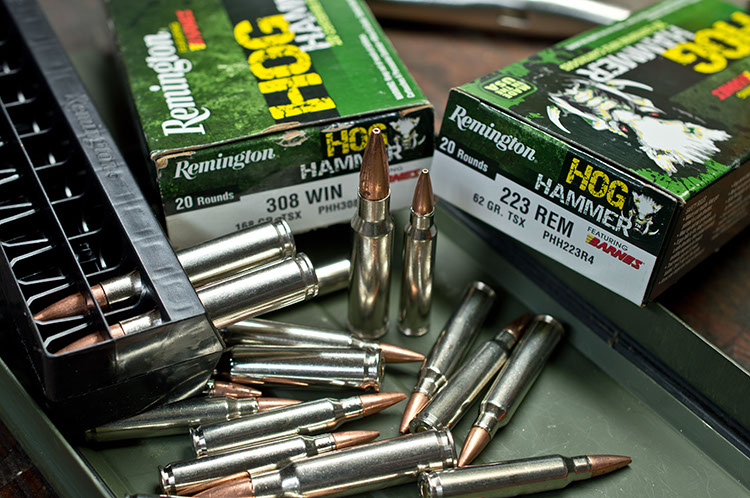
And they do have the propensity to be quite accurate. However, the notion that their solid mass somehow makes them superlatively accurate isn’t entirely deserved; you’ll note most match shooters obtain excellent results with lead-cored bullets. This is because while solid bullets can be made to more exacting tolerances and are free of variables such as errant jacket concentricity (in which a bullet’s jacket isn’t a uniform thickness around the entirety of the bullet), the materials they are constructed from are not as dense as lead. So, in order to even come to the same weight, solid bullets must be significantly longer, and as a result demand a faster twist barrel than a conventional bullet. And even although they have been lengthened as much as possible, most solid bullets remain slightly less heavy than their lead counterparts. So, while their slippery shapes (many of which are impossible to replicate in a conventional lead bullet) may make them slightly more efficient at passing through the air, their lack of mass makes them slightly less stable, making the accuracy argument largely a wash.
Obviously, as the entire bullet is made from the same material, solid, monolithic, or monometal bullets cannot be had in a soft point variety; there are only standard spitzer bullets, and hollow points. And equally obvious is that they won’t come cheap. Each bullet is literally machined, taking of far more time on the production line, and far more costly materials... remember again why lead was so popular? Thankfully though, while many solid bullets work very well on Canadian game, they are typically not as called for on this continent as they would be somewhere like Africa. Or the Jurassic period.